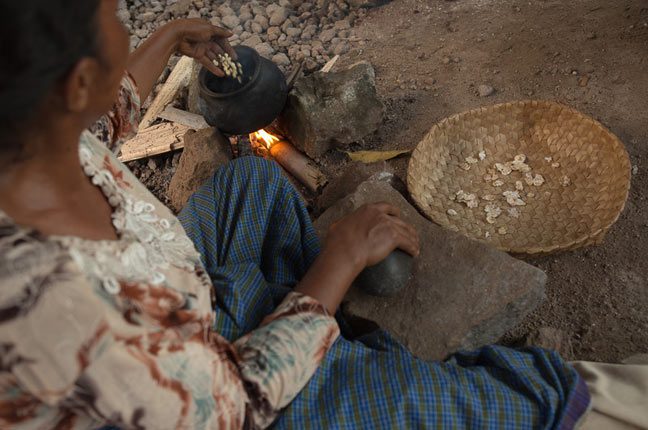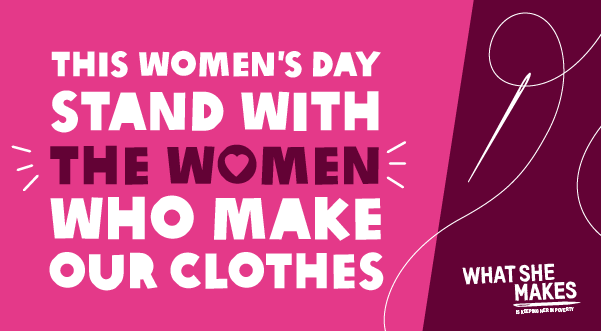HELP SAVE LIVES
Right now Oxfam is responding to emergencies around the world, including the recent earthquake and tsunami in Indonesia.
What are you actually going to do?
By Juan Martorana – blogging from Indonesia
The road to Hoelea from Lewoleba is the worst I’ve ever been on. It takes around 10 hours to cover the approximately 80 kilometre round-trip. Much of the bitumen has been washed away and what’s left sometimes forms obstructive islands in the middle of this single lane road: leaving a foot or more drop to the ground beside it.
After countless rainy seasons since it was built, the road is now badly corrugated and very rocky. With potholes of varying sizes — some huge — the occasional large puddle reminds me that we are not long out of the wet season and I wonder how people can expect to get food to markets and then to homes along roads like this at all in “the wet”.
It is a very long trip, with much weaving from one side of the road to the other, often slowing to a crawl. A couple of times the car stalls and we hold our collective breath (at least the first few times it happens). Will the old beast restart? The starter motor resists for long periods and the key requires multiple twists; our driver appears unfazed though.
When the road leaves the coast and rises into the mountains that track alongside the shore, there are some large sections of land-slip that eat into our path. At one point a tree has toppled down the almost sheer cliff and pulled out a large plug of the road with it.
On some of the higher mountain sections we get wonderful views down to the water and at one point a view of a dormant volcano on a neighbouring island. There are a couple of times on this mountain road that two larger vehicles meet at a corner and one or other has to back up before they can squeeze past one another. Friendly honks of the horn happen in the manner of cockies in the Australian outback: the Lembata version of raising a finger from the wheel as the two vehicles pass. Most of these other vehicles are motor scooters, but also include light trucks and mid-sized buses with passengers and cargo that spill out on to the roof.
We pass crops of sorghum, corn, as well as coconut and banana plantations. The sorghum and corn seemingly growing wild: often right up to the roadside. As we get further from Lewoleba the number of houses with concrete posts and red brick infill and roofs of terracotta tile or corrugated iron start to thin. Now thatch roofs become more common and the walls are more often thatch as well, or bamboo.
We also pass women carrying what look like quite heavy loads on their heads, often food. Other women sell drinks and snacks including fish at roadside kiosks of varying size. Men work by the roadside too, and kids are seen playing football, following their mothers around, or returning from school. “Hey Mister” is the common refrain, particularly from the young, and mothers often point us out as we pass. Waves and smiles are exchanged, often followed by a cheer as we pass.
When we stop all eyes are on the bules (white people) – but a smile almost invariably gets a warm one in return. One gets the feeling that outsiders are still a rarity here in Lembata.
We finally arrive in Hoelea and quickly set up to record a meeting between representatives of seven women’s groups that have gathered to tell their story. Siti updates the group on her latest endeavours before we hear from each woman in turn.
Ibu Susana Kewa (54) lives in the neighbouring sub-village of Hoelea 2. She grows tomatoes, peanuts, sawi (mustard leaf) and eggplant. She tells the group about her continuing struggle to access water. “It is a long way away. It is hard for us older women … we need a machine to dig and pump it up [and] channel it [to our crops],” she says.
Ibu Yohana (27) lives in Hoelea Satu. She grows sweet potato and bananas. She tells the room that she has problems “marketing” her crops. She produces crackers from her crop — similar in shape and texture to the prawn crackers that are widely available in Australia — and sells them at a nearby kiosk. But they are difficult to sell she explains, before she talks about her need for tools to prepare and package a processed crop.
Ibu Maria Miseri Baha (33) grows coconuts, cashews, bananas and sweet potato. “I also have chickens,” she tells me. “The problem is they die easily.” Ibu Maria needs support to be successful in her farming. She explains she needs “vaccines for my chickens [but also] tools to grind [my corn]…which I would then fry and sell as a local food snack.”
As I work my way around the group, inviting members to speak, the women grow bolder. Their stories come more quickly and with less anxiety at the video camera that swings to each of them in turn.
Afterwards, before I share a meal with seemingly half the village, I watch as Ibu Maria Peuma (45) gives a demonstration in the making of Jagung Titi — essentially corn flakes without the sugar (and a lot more real looking). While the kids crowd around to get some of this hand-flattened corn — the kernels individually pummeled by Ibu Maria with a large river stone — I’m approached by Ibu Teresia Boleng (49), one of the women I spoke too while filming earlier. She asks me, “What are you going to do with these words?” She asks with an intensity that says: “I don’t want any lip-service from you, son!”
“We’ve had people here before,” she says, following this with words to the effect that nothing came of it.
So what will our talk amount to?
Through my interpreter, I’m acutely aware of not making promises of immediate change for her and the women of Hoelea’s various sub-villages. I give a brief outline again of the GROW campaign before assuring her that we will be telling the story of women smallholder farmers in Indonesia through, in part, the production of a number of short video pieces. I explain to her that we will be showing these videos to people in Australia, including mothers like her. And that the aim of these videos is to encourage people in our very rich nation — and other rich countries like ours — to think deeply about her story, and support the women of Lembata through the sharing of these videos among their friends and family.
As my response is translated, Ibu Teresia breaks into a smile. I feel sure that she understands the difficulties of our shared mission, but also the genuineness of our approach.
There are an awful lot of words in this post, but it’s been a long day and there’s so much to record to even begin to do justice to these women’s circumstances and stories. So just a little more…
We start the return leg of our trip around 6pm. Crabs scuttle over the road in the dark, some caught in the headlights like rabbits. We stop several hours into the trip and most of us bail for a toilet break. It is quiet under the half-moon but for goats brushing through the scrub to escape and the odd small dingo-like dog that pads past.
The moon gives a decent enough view of the road and I consider walking back to the hotel on this warm evening. The thought of getting back in the vehicle doesn’t particularly inspire. But also, despite the tiredness, I’m wanting to stretch out the day.
I have seen a lot during my shortish stay in Indonesia and I’m searching for a way to tell the stories of these truly inspirational women to people like you — how best to tell them so you will want to share them with your friends, your family, your neighbours and your work colleagues. Because it is only with your energy and enthusiasm to support change, and that of your Facebook and Twitter networks, that change will be possible any time soon.
Perhaps you’re asking, “Is real change possible? Can we reduce the number of people going hungry in the world?” Yes, I’ve found it is possible — it’s happening in Indonesia.
Through the work of people like Siti Rofi’ah, the number of people going hungry was recently revised down by the United Nations Food and Agricultural Association from one in seven to one in eight. But that’s still 870 million too many people going hungry every day. And, despite the determination of the Female Food Heroes, the pace of change is still way too slow. That’s where you come in …
part 1 | part 2 | part 3 | part 4 | part 5 | part 6 | part 7



